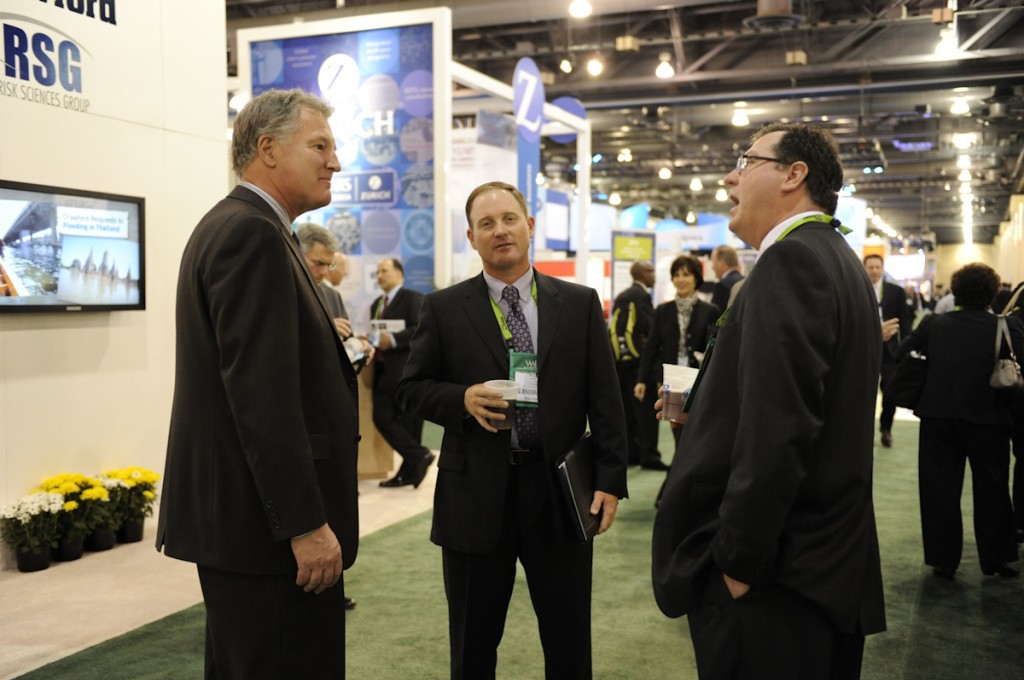RIMS Executive Director, Bermuda Premier Paula Cox and RIMS President Deborah M. Luthi at the RIMS 2012 Annual Conference & Exhibition in Philadelphia.
Women leaders within the risk management and insurance industry have slowly but surely become more and more prevalent and necessary. Working Mother magazine identified risk management as a top career for working mothers, yet women are underrepresented on the insurer side in senior management ranks. So what can the industry do better to support female professionals within the RMI field? And what is the business case for diversity? These and other topics were covered in this morning’s session, which featured:
- Carol Murphy, managing director for Aon Risk Solutions
- Chandra Metzler, head of financial lines/executive liability for Chartis
- Sarah Pacini, moderator for the session and member of the RIMS conference programming committee
The session began with the topic of mentors and sponsors within the industry: how do you get them and what are the benefits? For Murphy, she took the lead in reaching out to people she knew she could learn from, but, in her opinion, it didn’t have to be people she works with directly. “A mentor can also be a customer or someone at another company,” she said. “Reach out to those unconventional sources for mentorship and sponsorship.” Metzler agreed, noting that some of her most influential mentors were found outside of the office, such as her mother. “My mother taught me about work/life balance since she was a working mother herself.”
The panel agreed that diversity in the workplace can only benefit a company. “Having a diverse workforce helps bring out the best in people,” said Metzler. “It’s not only diversity of people, but diversity of thought.” Metzler’s employer, Chartis, uses an executive diversity council to address challenges and promote the issue of diversity. “We want to challenge ourselves about some of our assumptions regarding women in senior leadership,” said Murphy, whose employer, Aon, recently developed a women’s leadership governance board. And though these initiatives are intended to be beneficial, both women agreed that there must be accountability for the programs. “You have to make sure it’s not just a manager waving to you in the hallway,” said Metzler.
But what about the notion of a “sisterhood” among women. Is that fact or fiction? “There’s a lot to be said for the way women treat other women,” said Metzler. Murphy agreed that women do not support each other enough and that there is “an issue with women and the scarcity mentality — women often think there’s only room for one woman,” she said. Though this issue exists, it can be bettered. “I think it’s up to us to change the fact that those situations exist,” said Pacini










